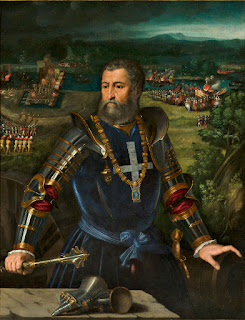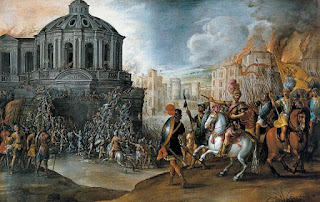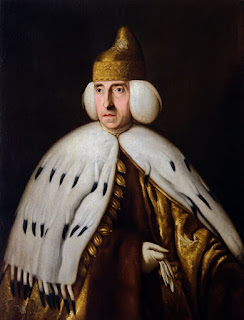Thousands die in pointless conflict of the Italian Wars
| The chaos of the Battle of Ravenna depicted in a 15th century woodcut |
The French, under the command of their brilliant 21-year-old leader Gaston de Foix, had taken Brescia in Lombardy by storm in February and then marched on Ravenna intending to provoke the papal Holy League army into battle. They also had an Italian contingent of soldiers with them under the command of Alfonso I d’Este, Duke of Ferrara.
Ramon de Cardona, Spanish viceroy of Naples and commander of the Holy League forces, led an army through the papal states of the Romagna to relieve Ravenna, passing Forlì and advancing north along the Ronco River.
Both sides had learned the new rules of warfare in the gunpowder age and were reluctant to assault well defended earthworks with cavalry or infantry.
They indulged in an artillery duel and had to manoeuvre unwieldy cannons to find effective lines of fire.
But after two hours they changed tactics and both cavalry and infantry threw themselves forward in assaults. The casualties were heavy as horsemen clashed in swirling melees and infantry swarmed over ramparts and ditches.
 |
| Alfonso I d'Este, who led a contingent of Italian soldiers in the battle |
While many of his soldiers were slaughtered, Cardona was taken prisoner.
Then, when the battle was effectively over, the French commander De Foix was killed during a pointless skirmish with the retreating Spanish infantry.
It was estimated that the French lost 4,500 men and the Holy League 9,000 in this battle, part of the War of the League of Cambrai, which took place during the long period of the Italian Wars.
The victory failed to help the French secure northern Italy and they were forced to withdraw from the region entirely by August of the same year.
Travel tip:
The Romagna, controlled by the Pope in the 16th century, was a region of Italy that approximately corresponds to the south eastern part of the present day region of Emilia-Romagna. It included the cities of Cesena, Faenza, Forlì, Imola, Ravenna and Rimini, where the Romagnola dialect is still spoken today.
| The Basilica of San Vitale in Ravenna |
Ravenna, in Emilia-Romagna, was the capital city of the western Roman empire in the fifth century. It is known for its well preserved late Roman and Byzantine architecture and has eight UNESCO world heritage sites. The Basilica of San Vitale is one of the most important examples of early Christian Byzantine art and architecture in Europe.
More reading:
How the Treaty of Lodi brought peace to northern Italy
Ravenna, the Ostrogoths and the Sack of Rome
The murder of papal military leader Girolamo Riario
Home










